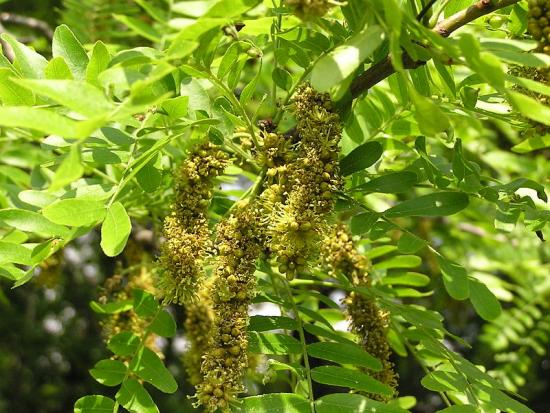





 3
3




“It’s said war—war never changes. Men do, through the roads they walk. And this road—has reached its end.”
 1
1




A build too cool to miss:Mike's GreenhouseA great example:Joseph's Garden
All the soil info you'll ever need:
Redhawk's excellent soil-building series





 1
1




Trace Oswald wrote:I have the thornless variety. I use them as shade trees because they make a really nice dappled shade, and as nitrogen fixers to be coppiced. I don't know how well that works though, my future coppice trees are far to small to be coppiced yet.




. . . bathes in wood chips . . .
 2
2




“All good things are wild, and free.” Henry David Thoreau





Artie Scott wrote:I have often wondered if the wood is as rot resistant as black locust, or even close to it. Anyone know? I have plenty round here and would love to make some home grown fenceposts.
Also, true story, when I was trying to source some black locust fenceposts a few years ago, I called a guy and asked if the Locust posts he was selling were black locust. He got kinda mean, saying they are just locust, which of course made me think he knew exactly what they were (this was a wood mill, mind you) and was scamming.
“It’s said war—war never changes. Men do, through the roads they walk. And this road—has reached its end.”

 3
3




Anne Pratt wrote:We worked for two summers to eradicate honey locust! (This was before I knew anything about permaculture.) The thorns alone were terrifying, and they multiplied with startling ferocity. I think they might be all gone, although I thought I saw one small one last year. If it surfaces I wonder what I'll do with it.
“It’s said war—war never changes. Men do, through the roads they walk. And this road—has reached its end.”
 2
2




Support Ant Village Lot Efforts On Narrow Pond
Respect your superiors...if you have any. Mark Twain

 2
2




“It’s said war—war never changes. Men do, through the roads they walk. And this road—has reached its end.”
 4
4





Family Yields
One Family's Approach to Permaculture: Applying permaculture principles to parenting and life as a family.
(Parent Coaching, Blog and Podcast)




Jordan Holland wrote:Speak of the devil.... I wondered, if these are so delicious and nutritious, why didn't the wildlife eat them? I'll have to watch this fall.
Support Ant Village Lot Efforts On Narrow Pond
Respect your superiors...if you have any. Mark Twain
 4
4




Julie Walter wrote:The flowers are edible, and DELICIOUSLY sweet!

Family Yields
One Family's Approach to Permaculture: Applying permaculture principles to parenting and life as a family.
(Parent Coaching, Blog and Podcast)




Artie Scott wrote:I have often wondered if the wood is as rot resistant as black locust, or even close to it. Anyone know? I have plenty round here and would love to make some home grown fenceposts.
Weeds are just plants with enough surplus will to live to withstand normal levels of gardening!--Alexandra Petri




Trace Oswald wrote:I have the thornless variety. I use them as shade trees because they make a really nice dappled shade, and as nitrogen fixers to be coppiced. I don't know how well that works though, my future coppice trees are far to small to be coppiced yet.
Weeds are just plants with enough surplus will to live to withstand normal levels of gardening!--Alexandra Petri




Mk Neal wrote:
Trace Oswald wrote:I have the thornless variety. I use them as shade trees because they make a really nice dappled shade, and as nitrogen fixers to be coppiced. I don't know how well that works though, my future coppice trees are far to small to be coppiced yet.
We have many honey locusts lining the street where we live, and while the main trees are thornless, the shoots that sprout up from the roots all over people’s yards are definitely not. I don’t know why that is, maybe the rootstock is not thornless. but you might want to be cautious not to end up with thorny branches if compiling.
A build too cool to miss:Mike's GreenhouseA great example:Joseph's Garden
All the soil info you'll ever need:
Redhawk's excellent soil-building series






|
PI day is 3.14 (march 14th) and is also einstein's birthday. And this is merely a tiny ad:
Learn Permaculture through a little hard work
https://wheaton-labs.com/bootcamp
|



